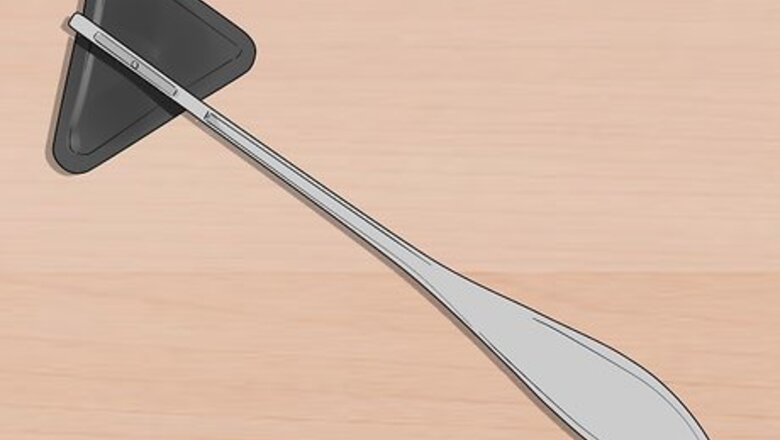
views
X
Research source
Gathering Supplies and Finding the Right Position

Get a reflex hammer. There are a variety of styles of reflex hammers to choose from. Some are light and small, and are designed to be swung with a small amount of force. Others are slightly weighted and use gravity to exert force onto the tendon. These hammers are available from medical supply businesses and online retailers. The head of a reflex hammer is made of rubber. This helps to ensure that it does not hurt when the hammer taps a tendon.
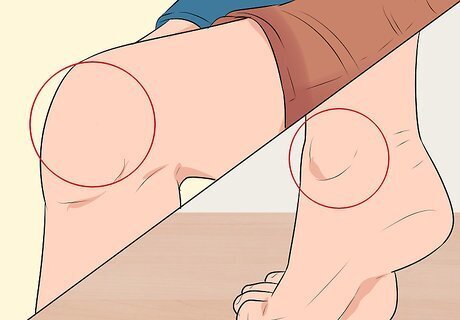
Pick a muscle to test. There are a wide variety of muscle reflexes that can be tested. The most common is the knee but any joint or large muscle can be assessed. Some reflexes that are usually tested during neurological exams include: Ankle Knee Abdomen Forearm Biceps Triceps
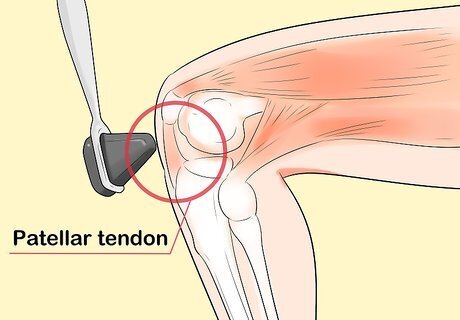
Locate the tendon you will tap. When testing a person's reflexes, you will need to tap directly on the tendon that connects the bone and muscle you want to test. Feel the area where the tendon is normally located so that you can find its exact position. The tendon will feel like a tight strip of tissue under the surface of the skin. For instance, if you want to test knee reflexes, you have to tap on the patellar tendon. This tendon is located just below the knee cap. Feel the bottom of the knee cap and, if necessary, have the person move their knee to make the tendon more visible.
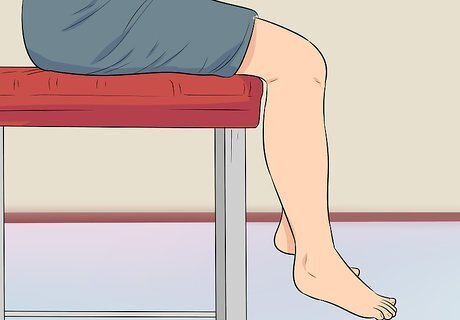
Make sure the muscle is in a neutral position and can easily flex. When testing reflexes, you need to allow the muscle to move freely once it is stimulated. Make sure it is in a position where it is not flexed but when it does flex it will not be hindered. For example, if you are testing the reflexes of the knee, the person should be seated on an exam table with their legs hanging down freely. If you are testing the bicep, allow the person to sit down and rest their arm in their lap. In this position the elbow should be bent a bit more than 90 degrees.

Consider testing your own reflexes. While it is not a common practice, you can test your own reflexes. Since reflexes are involuntary, as long as you position the muscle properly and tap the proper location, your muscle should respond. It may be difficult for you to get the reflex hammer into the proper position to test certain reflexes. For example, the achilles tendon would be difficult to test on your own body. Testing your own reflexes is a good way to practice your technique for reflex testing. If you have tried to test your reflexes yourself and you now have concerns about your health, go to a doctor to have the test done again. Having a doctor do reflex testing on you is more reliable than you doing it on yourself.
Causing the Muscle to Contract
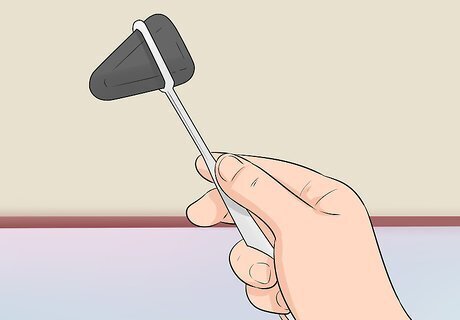
Hold the hammer lightly. If you are using a small, light hammer, hold it lightly between your thumb and forefinger. A weighted hammer can be held with the whole hand but the grip on this type of hammer should be light as well. Holding the hammer lightly ensures that you do not apply too much force when you tap the tendon.
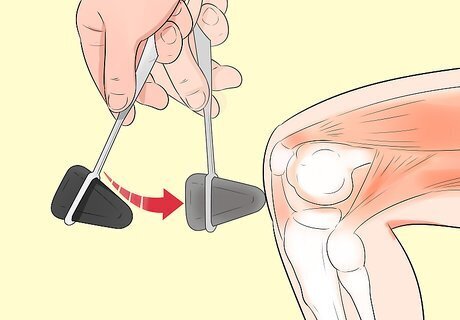
Use 1 swift stroke. Reflex testing only requires a single impact with the hammer. Move the hammer and your wrist in a 45 to 60 degree arc towards the tendon. This stroke should be done quickly and firmly, tap the center of the tendon.
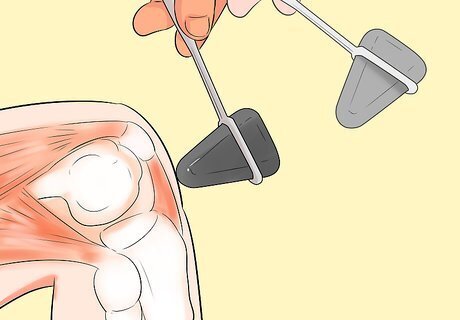
Tap the tendon with proper force. It does not take a lot of force to make a muscle flex. The tendon should be tap firmly but not with enough force to cause pain. The goal should be to tap the tendon with the least amount of force possible while still eliciting a reflex. This can take some practice to get right. If you have a weighted hammer, it is designed to create sufficient force when it is dropped from a distance of 10 to 12 centimetres (3.9 to 4.7 in). You do not want to add additional force. Gravity will do the work.
Assessing the Reflexes
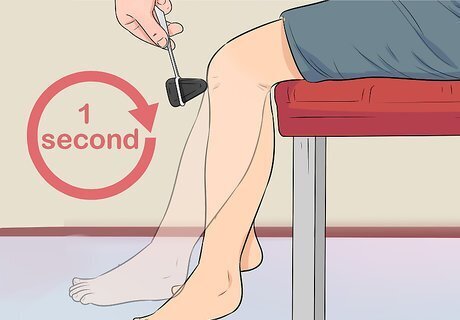
Look for a quick response. With a normal reflex, the muscle will contract quickly after the connected tendon is stimulated. This response isn't necessarily immediate, but should occur within 1 second of being stimulated.
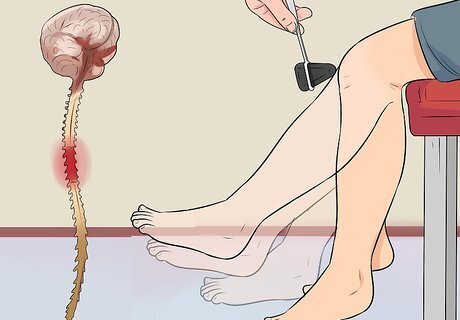
Notice exaggerated or repeating responses. Hyperreflexia is a condition in which a muscle repeatedly contracts when it is stimulated. This repeated contraction will be visible once the muscle is stimulated. This condition usually indicates a malfunction in communication in the spinal cord.
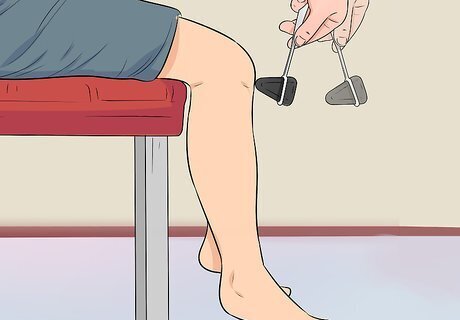
Assess whether no response is due to an error or a medical problem. In order to ensure that you tap the tendon correctly but no response occurred, you should do it several times. With repeated reflex tests you can ensure that your test results are correct and not due to an error in your method of testing. Having no response to tendon stimulation is called hyporeflexia.
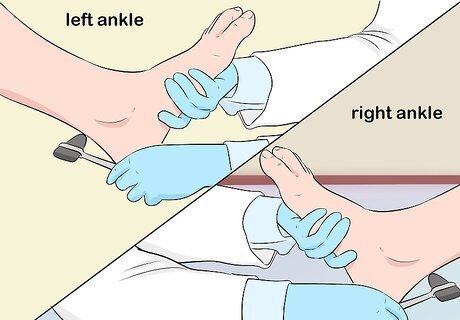
Compare reflexes on 2 muscles. When testing reflexes, it can help you gauge the response by comparing the same muscle on the opposite side of the body. For example, test the reflexes on 1 ankle and then immediately test the reflexes on the other ankle. Comparing the responses can allow you to spot abnormal responses.

Grade the reflex. In order judge how good reflexes are, most doctors grade them on a scale from 0 to 4. These numbered grades can also be given a plus or minus to indicate additional levels of response. The numerical grades correspond to responses in this way: 0 is no response 1 is a slight response 2 is a normal, quick response 3 is a very brisk response 4 is an abnormal repeating reflex
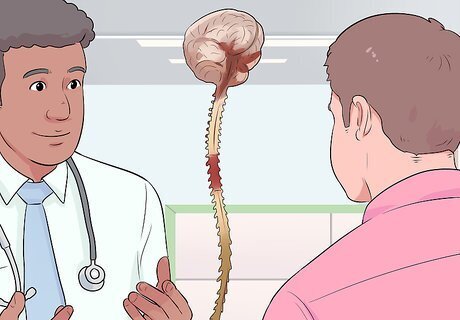
Use reflex results for diagnosis. Doctors use your grade of reflexes to verify whether your nerves are working effectively. If the muscle reacts correctly, the nerves in the muscle are communicating with the brain as they should. If the muscle doesn't react well, then there is an issue in the nerves between the muscle and the brain. This problem could be caused by a variety of issues, so your doctor will continue with addition medical tests to find the source of the problem. Some medical conditions that can cause poor muscle reflexes include multiple sclerosis, diabetes, alcoholism, amyloidosis, uremia, vitamin deficiencies, toxin poisoning, and certain cancers.














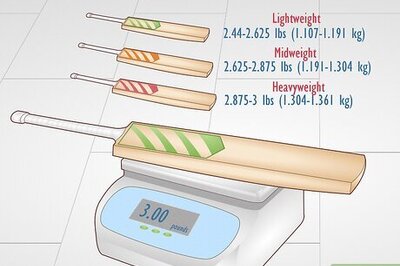
Comments
0 comment